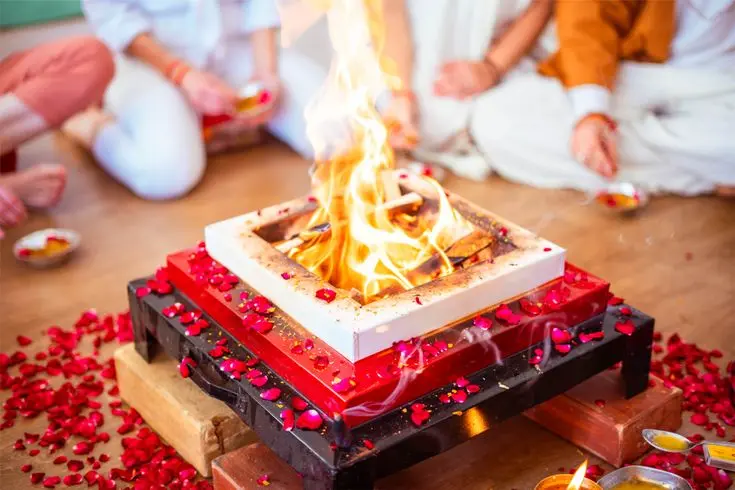Hawan Kund
A Hawan Kund, also known as a Yagna Kund or fire pit, is a sacred structure used in Hindu weddings and other ceremonies. It's a central element for conducting havan rituals, where offerings are made into a controlled fire to invoke blessings and purify the environment.
In a wedding context, the Hawan Kund ceremony symbolizes several key aspects:
- Purification and Cleansing:The fire is believed to purify the surroundings and participants, removing negative energies and promoting positive vibrations.
- Invocation of Deities:Offerings like ghee, grains, and herbs are made into the fire while reciting Vedic hymns and mantras, seeking blessings from various deities.
- Symbolic Representation:The fire often symbolizes Agni, the fire god, and represents the divine power and energy that is invoked during the ceremony.
- Beginning of a New Life:The havan is a significant part of Hindu weddings, marking the start of the couple's new life together with divine blessings.
The Hawan Kund itself is typically:
- Constructed from bricks or stone: It's usually square or rectangular, with a hollow center for the fire.
- Made of various materials: Brass, copper, or clay can also be used.
- May include: A Garbh Griha (central chamber), Pradakshina Path (path for circumambulation), and Yajna Vedika (platform for the priest).
During the ceremony:
- The priest or designated individual leads the ceremony, reciting prayers and guiding the couple and guests.
- The couple makes offerings into the fire while chanting prayers.
- The ceremony is often accompanied by music, chanting, and the ringing of bells.
In essence, the Hawan Kund ceremony in a Hindu wedding is a powerful ritual that combines spiritual significance with cultural traditions, marking the beginning of the couple's journey with divine blessings and positive energy,.
